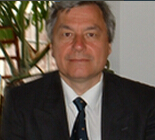Abstract—Medical professionals and patients have struggled with long elective surgery waiting line for decades. Hospitals across the world, especially in countries with universal healthcare, struggle with balancing the heavy demand from elective surgery waiting line and allocating enough resources for emergency patients. Patients must rely on private hospitals or going abroad to get faster health care, but poorer patients do not have this privilege. In this research, we investigate whether moving surgeons across hospitals within a local health district can improve the elective surgery waiting line. For the scope of this research, only 3 types of surgeries, Urology, Ophthalmology, and Orthodontics, are considered. In order to implement the simulation process, 3000 dummy patients, 2000 old and 1000 new patients, were created for each urgency type in each surgery category. The data was fed into a new model in the Arena Simulation model as input. Poisson and Triangular distribution were applied in this model for assigning the surgery and observation duration. Our model scenario contains 2 large hospitals and 1 small hospital. In the experiment model, one surgeon was moved from both large hospitals to the designated small hospital, and we analyzed the 90th percentile of the output. We noticed that the 90th percentile duration in the waiting line decreased for both small and large hospitals after moving one surgeon from each large hospital. Therefore, we can conclude that temporarily transferring surgeons from one hospital to another can be beneficial to the elective surgery wait line. By moving surgeons instead of patients, patients can also choose a hospital nearer to their home for their elective surgery.
Index Terms—Analysis, health care, modelling, simulation.
The authors are with the University of Sydney in the School of Mathematics and Statistics, Australia (e-mail: nethal.jajo@uni.sydney.edu.au, shelton.peiris@uni.sydney.edu.au).
[PDF]
Cite: Xing Yee Leong, Nethal K. Jajo, and Shelton Peiris, "Discrete Simulation on Elective Surgery Wait Line Using Arena Simulation Software," International Journal of Modeling and Optimization vol. 10, no. 2, pp. 47-51, 2020.
Copyright © 2020 by the authors. This is an open access article distributed under the Creative Commons Attribution License which permits unrestricted use, distribution, and reproduction in any medium, provided the original work is properly cited
(CC BY 4.0).


